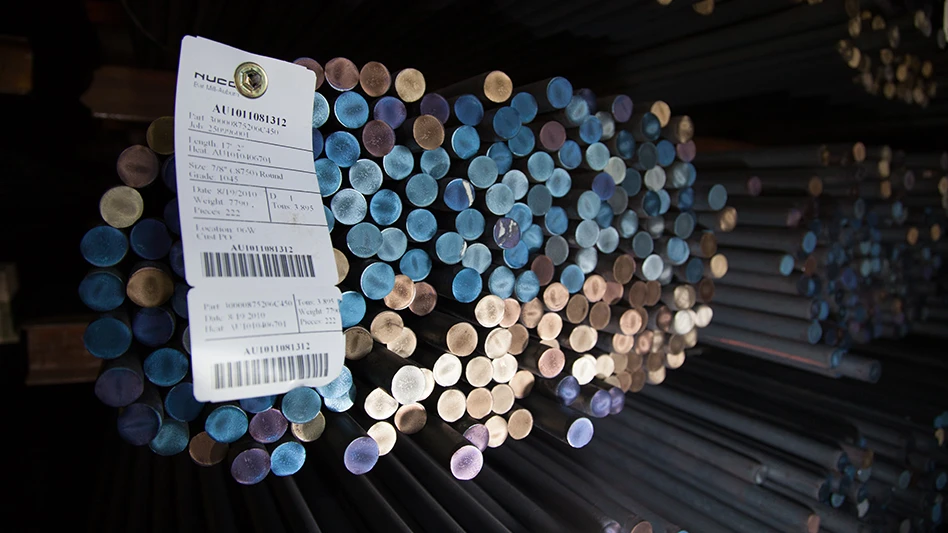A political pundit friend of mine recently opined that 15 percent of the American population is on the extreme right of issues, 15 percent is on the extreme left and the rest of us are somewhere between. It would appear that similar divisions exist in the trade debate. There are what we might call "academic" free traders (anything goes to establish trade advantage just as long as the consumer gets a cheap price), fair traders (rules-based trade) and true protectionists (close the borders). A small group of fairly vocal "trade philosophy of convenience" folks take both sides, depending on what they have to gain or lose in the trade game.
In the political arena, the center is pretty much left out of the name-calling. Not so in the trade debates. The centrist contingent is often lumped with the "protectionist" side simply because they don’t agree with the extreme free-trade group.

THE PLAYING FIELD.
What is the difference between the extremes? To address that, let’s look at the playing field and the "rules." The advanced economies of the world came to the conclusion that it isn’t appropriate for governments to compete with private enterprise (governments always win that contest) and have devised a set of rules to play by for those who sign up. There is a process to settle disputes. Virtually all countries maintain their trade laws to blunt dumping and subsidy.Sounds great in theory, if it wasn’t for gross omissions called "non-market economies." This grand scheme also ignores the mutations that developed from the "game plan" in the form of non-tariff barriers, currency intervention, "allowable" subsidies that address a broad number of issues, etc.
In addition, non-market economy concessions (special and differential considerations) end up in extensive government intervention in the so-called private sector of all-too-many very large countries. The organization that interprets disputed rules appears to have a certain bias and seems actively engaged in "judicial activism" (to borrow a phrase).
To make matters a bit more dysfunctional, many of the players simply violate the rules until a flag is thrown for the violation. As in American football, they can protest the call and it may take "forever" for the appeal to be processed.
Voting "rights" are interesting. The country with the biggest, most open market has the same vote as the country with the smallest, most closed markets. Is it a wonder that votes often go 145 or so to 1?
Add to the mix our seemingly lax trade agreement and trade law enforcement, some fundamentally bad agreements and a flawed negotiating approach and you end up with a $700 billion-plus trade deficit that is only getting worse.
LOSING GROUND.
While fair-trade advocates might be called names like "protectionist," perhaps the direction of the name-calling should be reversed and those seemingly out of touch with reality and fairness could be labeled "economic extremists."The growing trade deficit of the United States is indefensible. In this environment, U.S.-based companies and their employees are losing ground daily. In the unpleasant details of the enormous merchandise trade deficit, we have turned the corner on "high-tech" into the deficit category, have a very small trade surplus in the "services" sector and appear to be headed toward the negative side in agriculture on more than a spot basis. This can only lead to trade disputes down the road.
Let’s repeat and review some of the mechanisms used to un-level the field. A partial list includes:
•
Currency Manipulation. The Chinese and others peg and/or intervene in global currency markets. The extent varies, but China now sets the standard in intervention. Estimates are that its peg skews the playing field north of 40 percent. The country spends more than 12 percent of its GDP (gross domestic product) on intervention to gain trade advantage.•
Subsidies. In steel, subsidies are rampant. They are significant in other industries, as well, and come in many forms and sizes. Loan guarantees, government ownership, rebates of border-adjustable taxes (for exports only), direct funding or subsidy, discounted government-provided services (energy, transportation) and high structural inbound tariffs/duties to effectively close markets are but a few forms.The breakdown in subsidy elimination discussions at the OECD (Organization for Economic Cooperation and Development) was based on the insistence of many countries that their various subsidies could not be eliminated. After all, as some stated later, what would we do with all the people that would lose their jobs if we gave up subsidies? The U.S. position, however, was to get rid of all subsidies.
•
Trade Disputes. The retaliation allowed by the WTO (World Trade Organization) in some of its "activist-intervention" decisions skews fair (and free) trade. The VAT/FSC-ETI (Value-Added Tax/Foreign Sales Corp. – Extraterritorial Income Exclusion) decision is a good example.The EU, in particular, retaliated for the U.S. FSC program with double-digit selective tariffs until the United States nullified the FSC program. It should be noted this program provided nothing different for exporters, in practice, than the continuing VAT rebates available to the EU (and others).
In other over-reaching decisions, the WTO has decided to legislate morality to the United States via a decision that mandates that we allow offshore Internet gambling even when not only the federal government but also individual states have banned it.
The WTO also can tell a sovereign nation how to spend its revenues, as it has done in the CDSOA (Continued Dumping and Offset Act of 2000) issue (Byrd Bill). While CDSOA stirs debate, it was crafted to avoid WTO intervention. However, it seems the WTO changes the rules on the fly via variable interpretations.
The United States has no VAT rebates for exports nor VAT inbound penalties, precious few barriers to market access (tariff or non-tariff), trade laws that are essentially equivalent to those of others and, not incidentally, a huge consumer market. U.S. industry (given a level playing field) is highly competitive—to the point of being a dynamic global threat to other industrial countries. That was demonstrated when President Reagan leveled the playing field via the Plaza Accord in 1985, and the U.S. trade balance direction reversed.
PRESENT IMPERFECT.
Today we see new records on trade deficits. We find our "trading partners" lending us the money to buy goods by using the equity of our homes to pay for their development while risking our own. Our national savings rate is in negative territory. We are faced in many cases with the private sector of the United States being forced to compete against governments, a battle which the private sector loses every time.We have only ourselves to blame for allowing the gross trade imbalance to threaten our future. That which the public allows the government to do, it will do.
The real world suggests two prominent economic/business models. One is a competitive environment in which companies compete in markets vs. other private sectors with, hopefully, little government interference, except in the case of predatory practices. The other model is a government-directed, centrally planned and assisted economy. In the real world, those economies compete with private sectors elsewhere. The time has long passed for our government to take us out of the position of competing with other governments, to recognize the realities of the situation and to provide a level playing field.
The lack of recognition of real actions and real behavior on our part between these two models is surely the death of the free-enterprise model—not just the notion of free trade. We are headed towards deficits in the so-called services sector. In fact, it is easier to transfer information than goods—and less expensive.
When you run out of merchandise to ship because your ability to produce is decimated, you will degrade into a lower standard of living. Hardly the stuff of the "American Dream."
Robert W. Johns is director of marketing for Nucor Corp., Charlotte, N.C.

Explore the January 2006 Issue
Check out more from this issue and find your next story to read.
Latest from Recycling Today
- Indiana county awarded $65K recycling grant
- Mixed paper, OCC prices end year on downward trend
- Updated: CAA submits final draft program plan in Oregon
- Enviri names new president of Harsco Environmental business
- Survey outlines ‘monumental challenge’ of plastic packaging collection in UK
- Nippon Steel acknowledges delay in US Steel acquisition attempt
- BASF collaborates to study mechanical plastic recycling
- Commentary: navigating shipping regulations for end-of-life and damaged batteries





